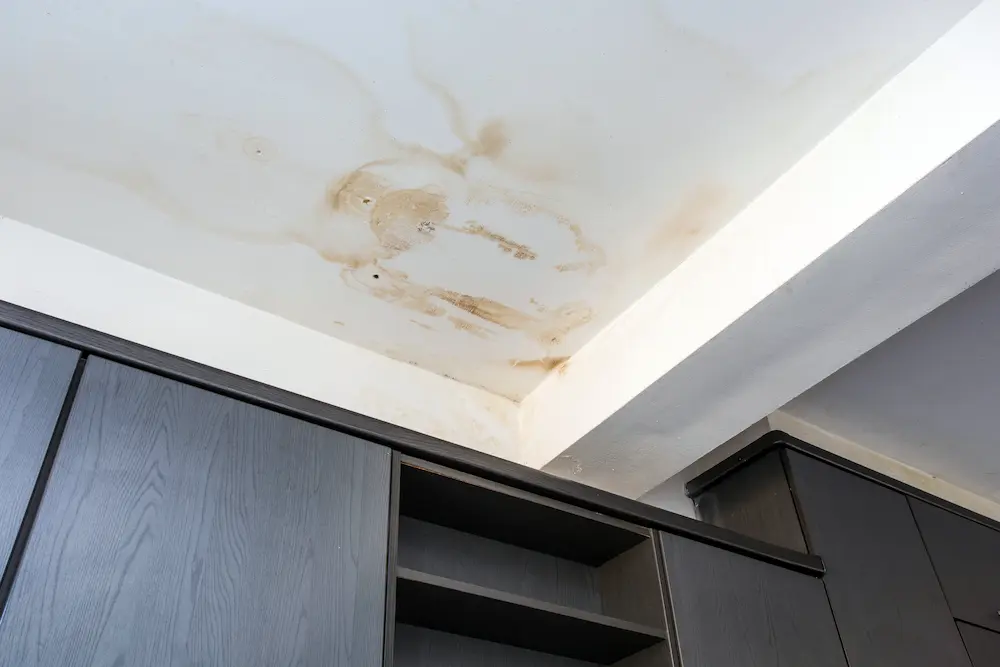
One of the scariest things that can happen to your home is water damage, since it can lead to mold growth. You might not know what kind of mold you’re dealing with or how to get rid of it. The most common types of mold around Vancouver WA and Portland OR include:
- Cladosporium
- Aspergillus
- Stachybotrys (which includes black mold)
- Penicillium
- Alternaria
- Sclerotinia (which includes white mold)
When new, mold from water damage looks fuzzy and semi-transparent. But once it’s fully developed, it appears as dark, grayish-black spots. Other types of mold can be different colors, like yellow, purple, green, and orange.
We’ve seen many folks try to clean up mold on their own using household cleaners. But this doesn’t always work and can sometimes make the problem worse. But don’t worry! We’re here to help you understand the types of mold that can show up after water damage and what to do about them.
Common Types of Mold from Water Damage
After water damage occurs, you might see different kinds of mold in your home. Many homeowners try to identify mold using online pictures or home test kits. However, these methods aren’t always accurate and can lead to mistakes.
The most common types of mold and what they look like in the Pacific Northwest include:
Cladosporium
Black, brown, or olive-green with a powdery texture.
Aspergillus
Yellow, green, gray, or black fuzzy patches.
Stachybotrys (Black Mold)
Slimy, dark green to black – often mistaken for dirt or grime.
Penicillium
Blue, green, or white with a velvet or brush-like texture.
Alternaria
Dark green or brown, with a soft, velvety texture.
Sclerotinia (White Mold)
White mold can be tricky because it’s often mistaken for harmless mildew.
Your Emergency Can't Wait - At Your Door in 90 Minutes or Less
Call BCC Restoration now — 24/7 emergency response when you need it most.
360-953-8145What are the signs of mold sickness?
If you experience these symptoms, seek medical assistance right away:
- Fatigue
- Nasal congestion
- Sleep disruption
- Headaches
- Cognitive difficulties
- Skin rashes
- Eye irritation
- Other respiratory issues
What to Do About Mold After Flooding (and Other Disasters)
Flooding can bring different types of mold into your home. This is especially worrying because standing water can contain harmful bacteria and other contaminants. Indoor mold in particular can cause several health issues, especially of the respiratory variety.
Mold spores start to develop within 48-72 hours after water exposure, so you need to act fast. Check out surfaces like plywood, drywall, fiberglass, and any other porous, organic surfaces. These areas are easily submerged in water and retain moisture, making them perfect breeding grounds for mold.
Look out for these signs of mold growth:
- A musty odor or foul smell
- Spots on wooden walls, floors, and ceilings
- Feeling and smelling dusty inside, even with constant cleaning
- Allergic reactions when stepping inside
Professional Mold Remediation Services
Dealing with mold after water damage can be overwhelming. You might not know where to start or how to make sure the mold is completely gone. Many people try DIY mold removal methods, but these often fall short. They might miss hidden mold or fail to address the underlying moisture problem.
At BCC Restoration, we have special tools and know-how to remove mold safely and completely. We’ve been helping people in Vancouver WA and Portland OR for 18 years, and we’re ready to help you, too! We use special cleaning methods to remove mold completely and prevent it from coming back. Plus, we can help fix any water damage that caused the mold in the first place.
Don’t let mold take over your home after water damage. Call BCC Restoration today, and we’ll be there within 90 minutes to start solving your mold problem!
Back to Mold Remediation